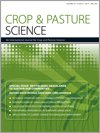The increasing demand for safe and nutritional dairy and beef products in a globalising world, together with the needs to increase resource use efficiency and to protect biodiversity, provide strong incentives for intensification of grassland and forage use. This paper addresses the question: ‘Does intensification of grassland and forage use lead to efficient, profitable and sustainable ecosystems?’ We present some notions about intensification of agricultural production, and then discuss the intensification of grassland-based dairy production in The Netherlands, Chile and New Zealand. Finally, we arrive at some conclusions.
External driving forces and the need to economise (the law of the optimum) provide strong incentives for intensification, that is, for increasing the output per unit surface area and labour. The three country cases illustrate that intensification of grassland use is a global phenomenon, with winners and losers. Winners are farmers who are able to achieve a high return on investments. Losers are small farmers who drop out of the business unless they broaden their income base. The relationship between intensification and environmental impact is complex. Within certain ranges, intensification leads to increased emissions of nutrients and greenhouse gases to air and use of water per unit surface area, but to decreased emissions when expressed per unit of product. The sustainability of a grassland-based ecosystem is ultimately defined by the societal appreciation of that system and by biophysical and socioeconomic constraints.
In conclusion, intensification may lead to more efficient and profitable and, thereby, more sustainable grassland ecosystems. This holds especially for those systems that are currently not sustainable because they are either underutilised and of low productivity or over-exploited and unregulated, and as long as the adapted systems meet societal and ecological constraints.





